PHOTO STORY: Wildlife startled by return of student life
By David Gomez Jr.
Editor-in-chief
Photos by Karla De Leon and David Gomez Jr.
Published Monday, Sept. 13, 2021
The local TAMIU wildlife seems uncertain of what to think as student life returns to campus. For the past year and a half, students “phoned in” their class attendance via the virtual environment and the wildlife expanded its presence some in that physical absence.
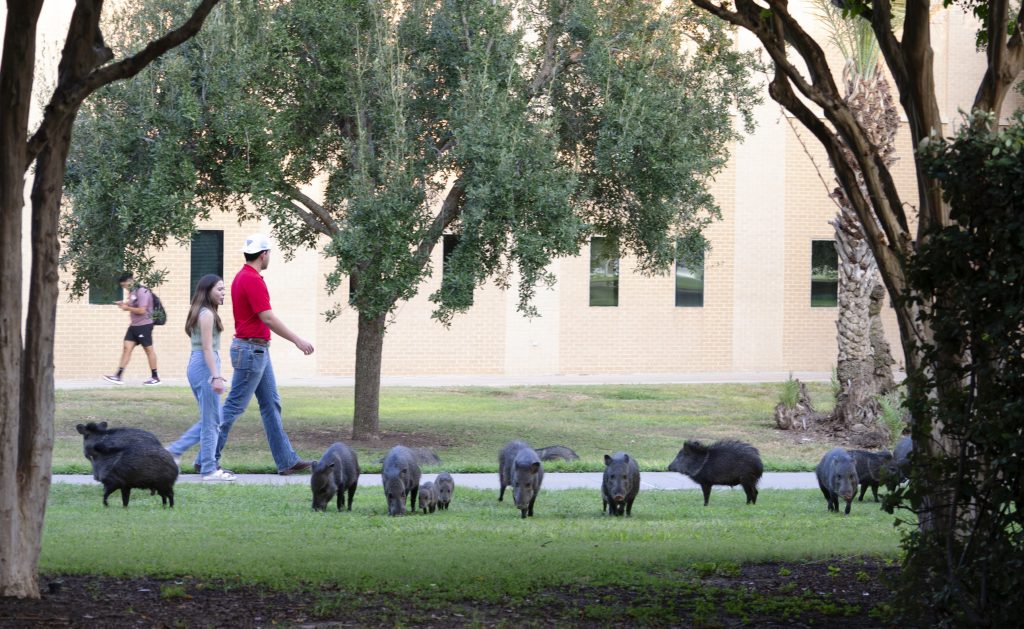
Students walk past a squadron of javelina on campus Friday evening, Sept. 10, 2021.
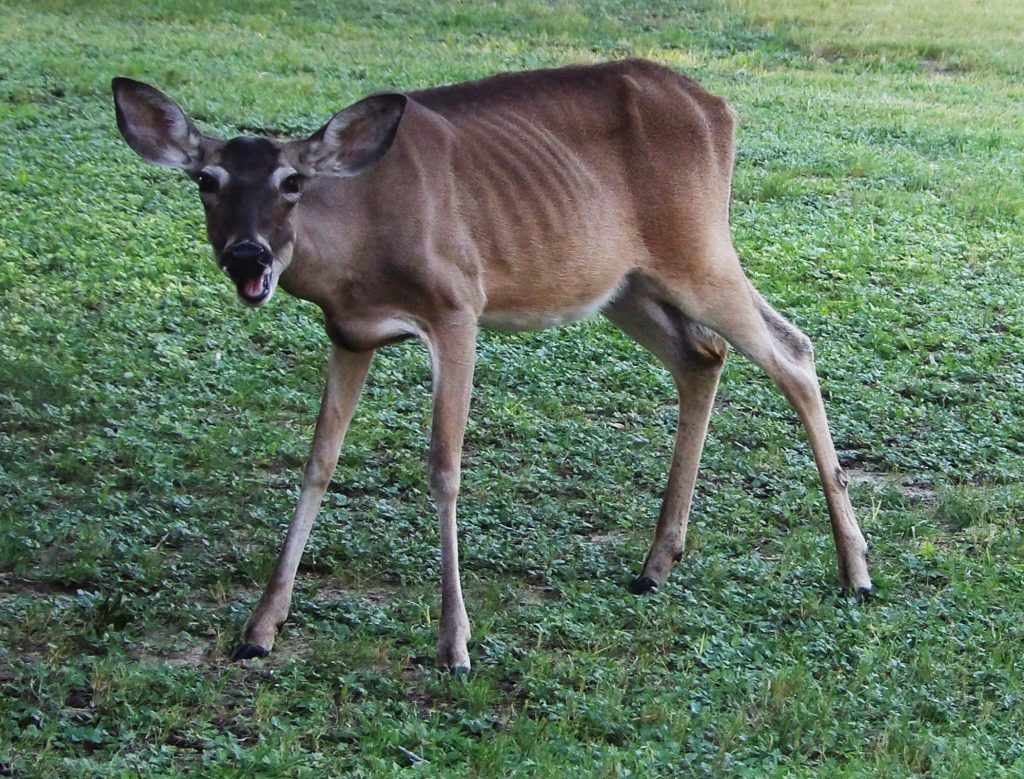
A deer eats while looking at campus passersby on Sept. 10, 2021.
The grass looks greener, the shrubs intact, and the palm trees sway in the breeze. Though, another noticeable detail that will be seen as students make their way around campus will be the wildlife in motion. Deer, javelina and even raccoons, on a quiet night in the breezeway, will be seen roaming around scrounging for food.
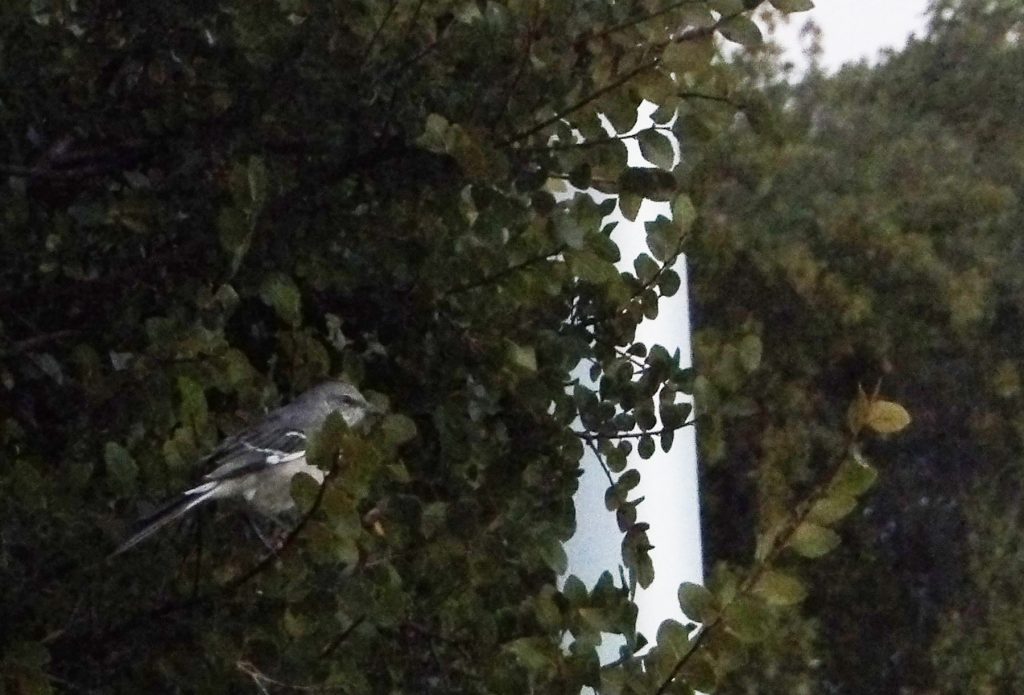
A little bird sits on the branch of a tree from University Village at Sept. 11, 2021.
According to the Texas Parks and Wildlife website, “The land bordering the back of [Texas A&M International] University contains an extensive tract of undeveloped brush that contains a variety of sparrows, northern bobwhite and scaled quail, as well as occasional occurrences such as dark-eyed junco. Long-billed and curve-billed thrashers, cactus wren and black-throated sparrow also occur here. A dirt road runs through the tract and there is a small pond that attracts migrant birds. Javelina and white-tailed deer are abundant and easily seen here.”
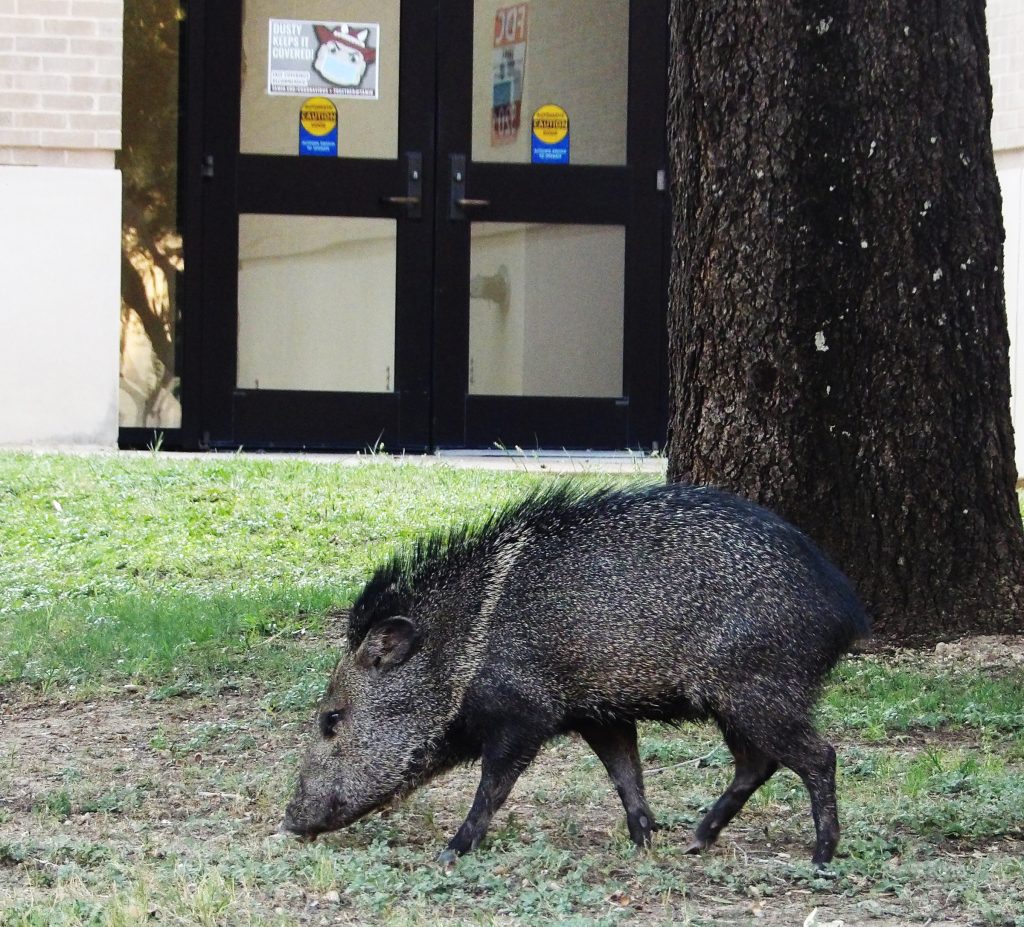
A javelina eats in front of the Western Hemisphere Trade Center on Sept. 10, 2021.
That list, though, is incomplete.
Students fortunate enough to smell a pungent odor in the air, should make sure to stray away from it and find another route to their class, adviser or car. It might be exactly what they think it is—some are small and cute looking, but as soon as that bushy black and white tail goes up, it might already be too late.
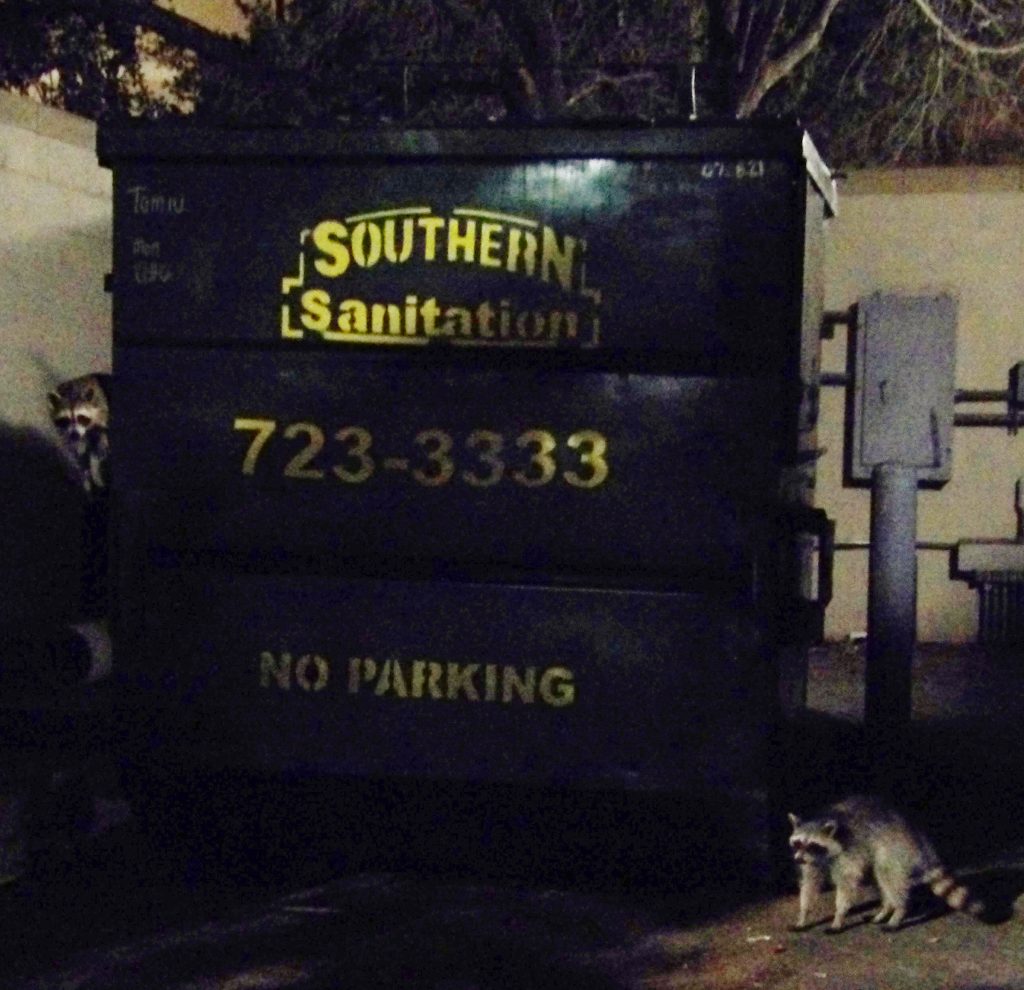
Raccoons show off why they are sometimes referred to as “trash pandas” at a campus garbage disposal near the Student Center on Sept. 11, 2021.
During the day, when most students are busy learning in their respective classes, others may come across the sounds of birds chirping—almost as if whistling a tune to welcome students back to campus. It can be rather relaxing for those not too busy looking for that airpod they dropped earlier from the library to their car.
Returning to campus, students are encouraged to stay aware of their surroundings. Remember, the wildlife was here before the campus was in place and they will keep their distance if passersby keep theirs too—coexist. Time to roam around the campus.
